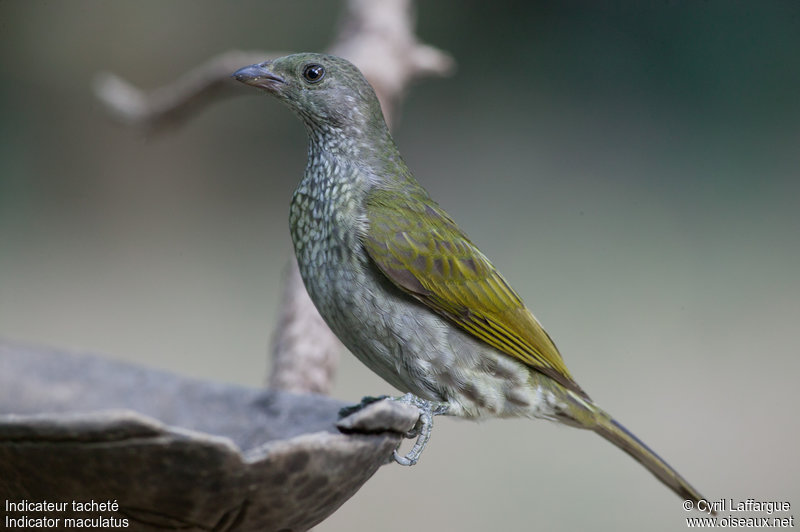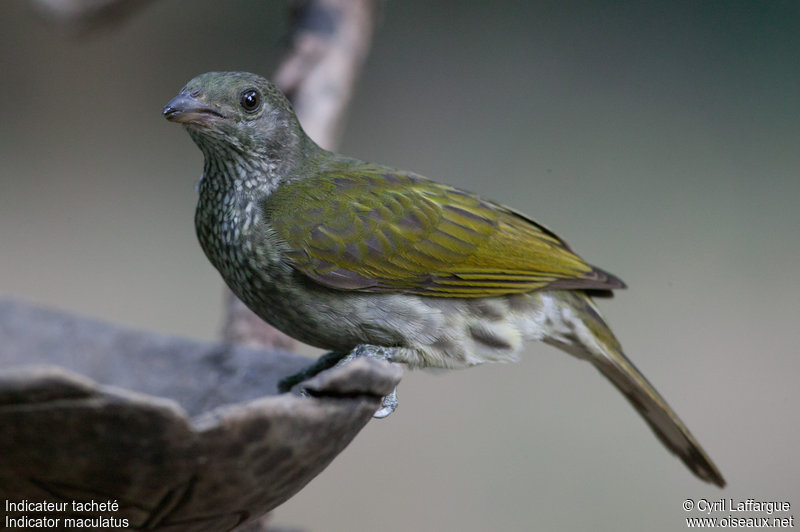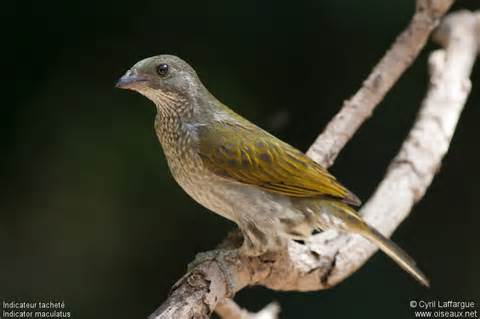
Indicator maculatus
TAXONOMY
Indicator maculatus G. R. Gray, 1847.
OTHER COMMON NAMES
French: Indicateur tachetй German: Tropfenbrust-Honiganzeiger;
Spanish: Indicador Moteado.
PHYSICAL CHARACTERISTICS
6.75 in (16.5 cm). Olive-brown with some green tinges above,
brownish underparts with parallel rows of yellow-white spots
running from the throat to tail. Crown has array of small spots
that echo rows on the underside. No appreciable sexual dichromatism.
Bill is short, stout, and conical.
DISTRIBUTION
Equatorial Africa from Senegambia to eastern Zaire.
HABITAT
Dense, lowland forest along rivers.
BEHAVIOR
Similar to that of its close relative, the scaly-throated honeyguide.
Individuals are solitary, roaming about the forest
canopy most of the time, but regularly foraging at lower levels.
Most prominent vocalization is trill like that of the scalythroated
honeyguide’s, described as low “brrrr” or “prrrr.”
Other voicings include a loud “woe-woe-woe” similar to calls
of falcons or eagles, with tail fanned and body feathers
puffed.
FEEDING ECOLOGY AND DIET
Forages throughout all forest levels, but prefers the canopy.
Regularly search out beeswax sites, and vary that diet with
caterpillars, beetles, other insects, and spiders.
REPRODUCTIVE BIOLOGY
Preferred host species is buff-spotted woodpecker (Campethera
nivosa). Plumage approximates that of woodpecker, so they enhance
their brood parasitism by imitating the woodpecker’s voice.
CONSERVATION STATUS
Not threatened.
SIGNIFICANCE TO HUMANS
None known.
Other popular Animals
Photo Gallery of - Spotted honeyguide




 Animalia Life
Animalia Life